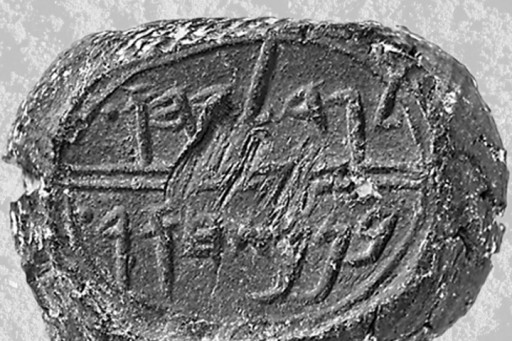
An impression from the seal of an official in the court of the biblical King Zedekiah has been found during an archaeological excavation in Jerusalem 's ancient City of David area in strata dated to the time of Jerusalem's destruction at the hands of the Babylonians.

The clay impression, which likely once sealed an official government document, bears the name "Gedaliah the son of Pashhur," one of the government officials who tried to have the prophet Jeremiah executed for treason when Jerusalem was being threatened by Babylonian armies before its destruction around 587 B.C. He is mentioned in Jeremiah 38:1-4:
"Now Shephatiah the son of Mattan, Gedaliah the son of Pashhur, Jucal the son of Shelemiah, and Pashhur the son of Malchiah heard the words that Jeremiah had spoken to all the people . . . Therefore the princes said to the king, 'Please, let this man be put to death, for thus he weakens the hands of the men of war who remain in this city, and the hands of all the people, by speaking such words to them. For this man does not seek the welfare of this people, but their harm'" (emphasis added).
The story in the book of Jeremiah goes on to describe how the biblical prophet was lowered into a muddy, abandoned cistern and left there to die before he was rescued by a different official sympathetic to him. Jeremiah survived the siege. The king, Zedekiah, didn't fare so well. He was captured, his sons murdered, and he was taken captive to Babylon where he later died.
Several things are remarkable about the discovery of this seal impression. Perhaps most astounding is the fact that it is the second discovery proving the existence of a biblical figure mentioned in this same passage.
Three years ago a seal impression bearing the name "Jehucal, son of Shelemiah, son of Shevi" was found a few yards away in the same excavation. This same Jehucal, or Jucal, is mentioned in Jeremiah 38:1 right after Gedaliah, as we saw quoted above, as well as in Jeremiah 37:3. (See "Discovery proves existence of another biblical figure," The Good News, November-December 2005, p. 26.)
Even more amazing is the fact that this is the sixth individual mentioned in the book of Jeremiah (not counting Babylon 's King Nebuchadnezzar) whose existence has been confirmed by archaeology.
Two seal impressions have also been found with the name of Jeremiah's scribe, Baruch son of Neriah, and one was discovered of another Jewish government official, Gemariah son of Shaphan, both mentioned in Jeremiah 36. A cuneiform tablet excavated in the ancient Babylonian city of Sippar early in the last century was recently found to bear the name of the Babylonian official Nebo-Sarsekim, mentioned in Jeremiah 39:3 (see "Archaeological discovery confirms the Bible (yet again)," The Good News, September-October 2007, p. 27). And four tablets excavated in Babylon around the same time refer to King Jehoiachin (mentioned in Jeremiah 52:31-33) and his family.
Bible critics have no answer for the remarkably accurate prophecies found in the writings of biblical prophets like Jeremiah, so they claim that these must have been written long after they say they were.
Now those critics arguing for a late date are faced with a huge and growing problem: How can they explain away the recording of the names of relatively minor government officials and foreign figures in those books, and then proof being discovered of the existence of those same individuals 2,600 years later—in exactly the specific locations the Bible describes for them?
Clearly the author of the book of Jeremiah was knowledgeable of minor and specific details regarding the times in which he wrote. The obvious conclusion from these many archaeological discoveries is that this book was indeed authored by the prophet Jeremiah around the time of the Babylonian invasion of Judah just before Jerusalem's destruction. The evidence is clear that the book of Jeremiah is describing real history as it unfolded at the time.
-- GN Nov./Dec. 2008
Hope of Israel Ministries
P.O. Box 853
Azusa, CA 91702, U.S.A.
www.hope-of-israel.org